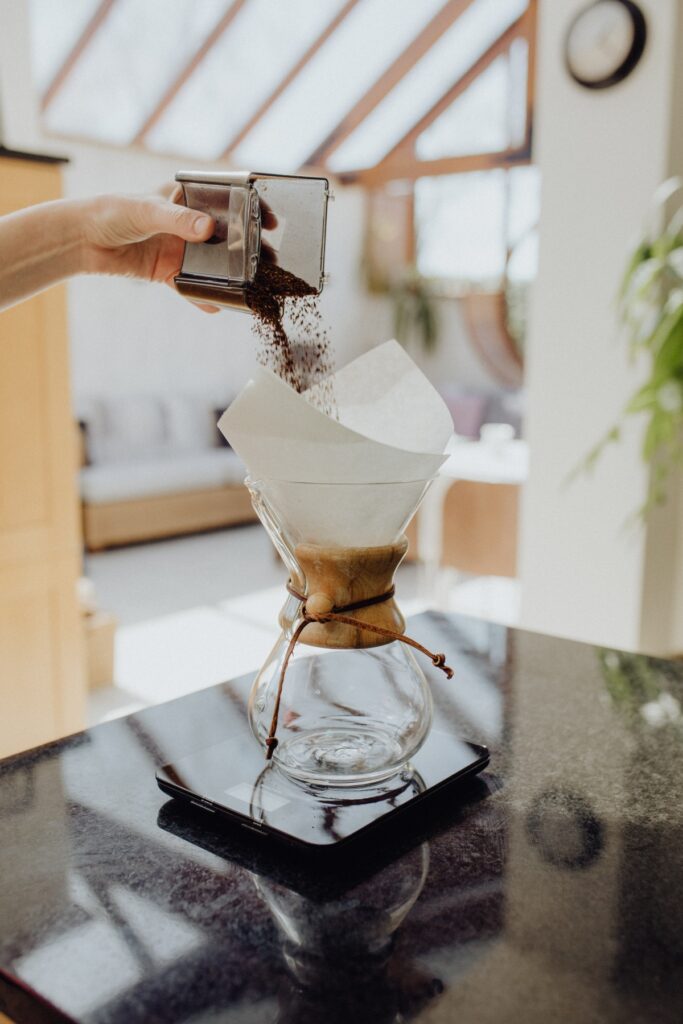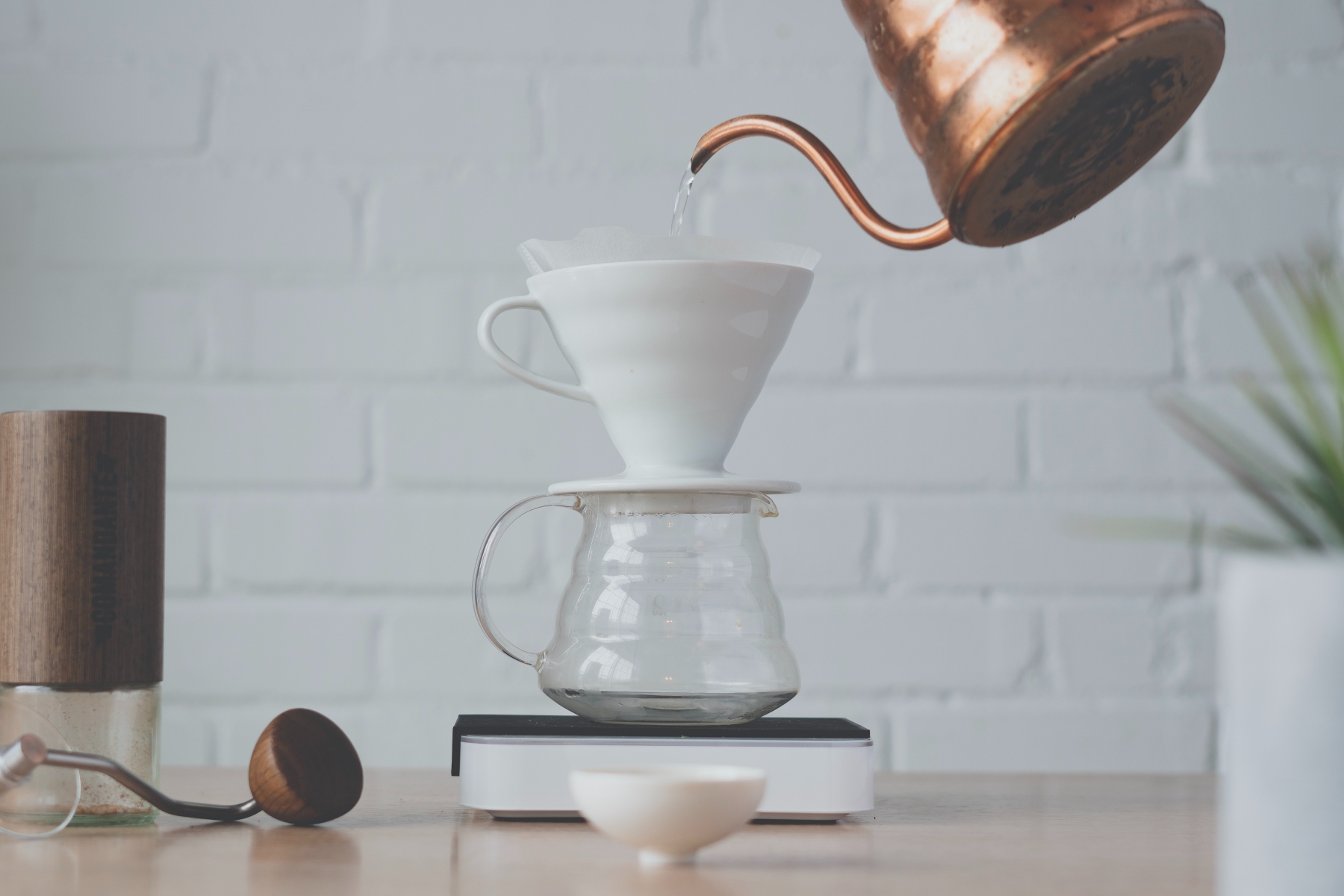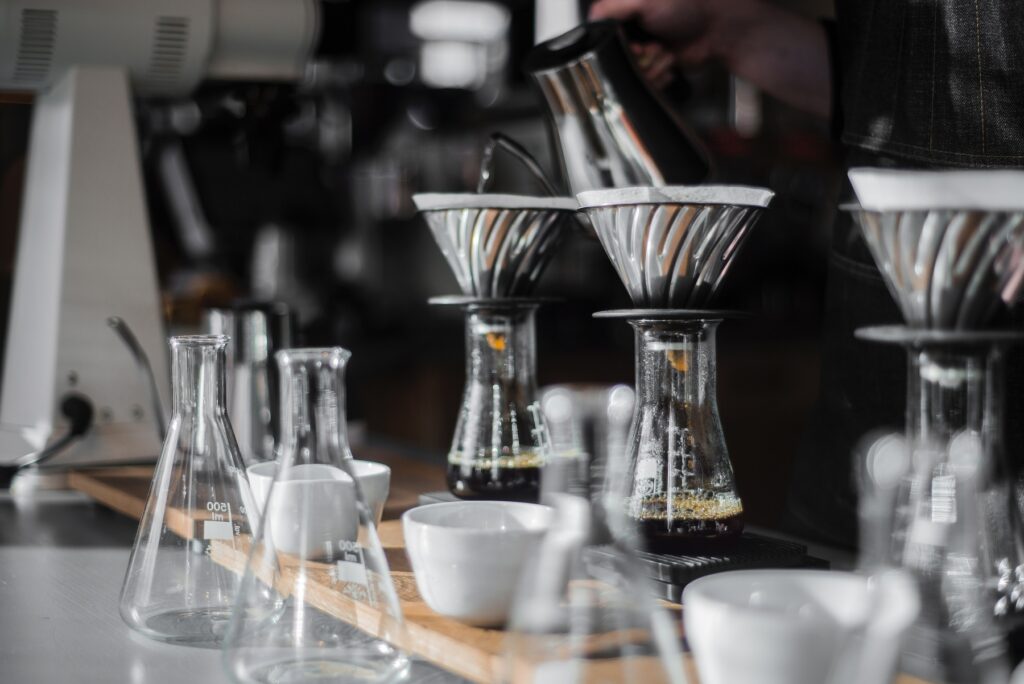In 2013, just weeks after opening, G&B—the much anticipated Los Angeles café from former US barista champions Kyle Glanville and Charles Babinski—intentionally decided to eliminate a menu option that seemed ubiquitous on specialty coffee menus: pourovers.
Instead, the café would focus on serving a meticulously dialed-in batch brew, promised to be every bit as good if not better than by-the-cup options. At the time, this felt like a harbinger of a larger industry shift away from the small batch, hand-made and artisanal, to streamlined efficiency.
Coffee shops were forced to reckon with the economies of scale, and slowly but surely, consumers began to notice as baristas “waved off the pour over cone,” writes Matt Buchanan of The Awl in 2015. “What I wanted, the barista said, was the regular coffee, fresh out of the giant automatic drip machine.” In time, mainstream publications began questioning whether the pour over “trend” was over, proclaiming, “the machines are back, and at least some of the country’s top baristas are here for the revival.”
At the time, I was the educator at Quills Coffee in Louisville and embraced the trend. Although we kept manual brew methods as part of the training program, I helped lead Quills to discontinue manual pour overs at its highest volume café to streamline service.
But in 2022, I began to notice something curious in my Instagram feed. Cafés that had discontinued pour overs were bringing them back. New cafés continued to open with alternative brew methods on the menu. Cafés that had always made pour overs were stubbornly persisting, even thriving. It appeared as though reports of the pour over’s death had been greatly exaggerated.
Single-Serve Hospitality
“My goal was to introduce Everett to specialty coffee. I felt like pour overs, specifically V60s, were a good way to do that,” says Maxwell Mooney, owner and founder of Narrative Coffee in Everett, Washington. For Mooney, the act of making a pour over visually differentiated Narrative’s coffee. Pour overs also served a practical purpose.

“It opened up options for coffee selection,” Mooney says. “I wanted our menu to be adventurous. Every day someone could come in and try a new coffee.” While few cafés could consider serving more than two coffees at a time on autodrip, pour overs allow Narrative to offer up to four different coffees at any given time.
Mooney was aware of the arguments against pour overs but chose a different path. “We find them to be delicious and manageable,” he says.
Quills Coffee has introduced–and removed–pour overs multiple times over its 15-year history. Most recently, it discontinued pour overs for a streamlined coffee service during the early days of the COVID-19 pandemic. But with new cafés opening in both Louisville and Indianapolis in 2022, the team at Quills wanted to bring pour overs back to center stage.
“Pour overs are one of our favorite menu items because they are a time to intentionally practice quality and hospitality in a deeper, more intentional way,” says Megan Lowry, Quills’ director of operations.
Lowry sees pour over service as an opportunity to create value for new and loyal customers. “For newer customers, a pourover presents an opportunity to intentionally talk through a single-origin coffee and better understand origin, tasting notes, and coffee as a craft,” she says. “Pour overs take a few more minutes than a filter coffee pour, so for our regulars, that creates time for intentional conversation and building community.”
Better Than Batch Brew?
But not everyone is convinced pour over is the superior brewing method.
For Jamie Cunningham, co-owner and hospitality director at Stay Golden in Nashville, Tenn., the superior efficiency of batch brewers allows his team to focus on taking care of their customers. Stay Golden offers two batch brew options—a single-origin coffee and a blend—and no manual brew methods.
“We can make 1-2 gallons of coffee in the same amount of time it would take to rinse a filter for a pour over,” says Cunningham. “For the most part, we are serving people going about their day. Efficiency matters.”
Cunningham also rejects the notion that only serving batch brew compromises coffee quality. “We can produce really great coffee with a batch brewer. It can be executed perfectly down to the exact TDS (total dissolved solids, a measure of extraction) you’re looking for,” he says.
For Cunningham, focusing on autodrip is a way to keep staffing leaner and wages higher. “A lot of people aren’t aware of the labor costs of a pour over,” he says. “The way we pay our team, I don’t feel like we can charge what we need to charge for a pour over.”
But for Mooney, these issues can be solved with café design and training. “The architecture of both of our shops allow the host to make pour overs at the same time as taking orders,” he says. “You have to have a training program that focuses on that.”
At both of Narrative’s cafés, the pour over station is set to the barista’s right from the point of sale. This allows the barista to enter the orders with their left hand while holding a kettle in their right.
Mooney even developed Narrative’s pour-over recipe with this workflow in mind. “We stagger our brewing intro three pulses: the bloom, the first pour, and the second pour,” says Mooney. “That builds in time for two pour overs to be done at the same time, or grab a pastry, refill kettles, and grind more doses.”
For Lowry, the challenges of implementing pour overs across multiple locations are offset by the opportunity to offer customers a more diverse coffee menu. “We typically use pour over as a time to offer single origin coffees, limited releases, or other coffees that we can’t offer on batch brew due to the higher price point of those coffees,” she says.
For Mooney, pour over service is ultimately about providing customers with the best cup of coffee possible. “I don’t know what it is, but the best V60s I’ve had are still better than the best batch brew I’ve had,” he says.
Cover photo by Julien Labelle
Michael Butterworth is the cofounder of etkincoffee.com and thecoffeecompass.com. He lives in Istanbul, Turkey.

















